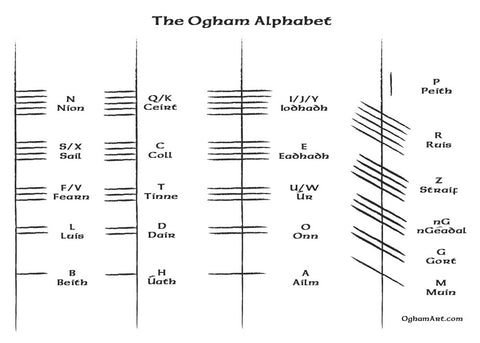Freedom (Saoirse)
The Irish word for freedom - "saoirse" - in a limited edition commemorative print created for the 100th anniversary of the Easter Rising in 2016. From the trumpet of a white Easter lily rises the Irish word "saorise" presented in the ancient script of Ogham.
The original print is hand-painted and then dimensionally printed in green, white, orange and gold.
- Presented in white double mat and black wood frame in open front corrugated box perfect for gift wrapping
- Certificate of Authenticity with numbered edition and artist signature
- Includes a descriptive label on the back of the mat and frame along with a 4x6 card explaining the history of the Ogham alphabet
Ships within 1-3 business days. USPS shipping times are in addition to this handling period.
Here is a brief summary of the Ogham alphabet. Stay tuned for more detailed posts in the days to come. Sign up below for the Ogham Art Newsletter to receive email notifications about new postings, blogs, products and events.
Sláinte,
Colleen & Chris
Ogham is the earliest written form of Primitive Irish, the oldest of the Gaelic languages. Ogham was first used in Ireland and parts of England, Scotland and Wales between the 2nd and 6th centuries. Though its actual origins remain a mystery today, it is believed the Celts desired a cryptic alphabet that could not be deciphered by Roman Britain.


Represented as a series of perpendicular and intersecting lines, this ancient script is thought to be influenced by the Latin alphabet using 20 characters. It is most commonly written vertically and is read from bottom to top. When presented horizontally, it is read from left to right.








